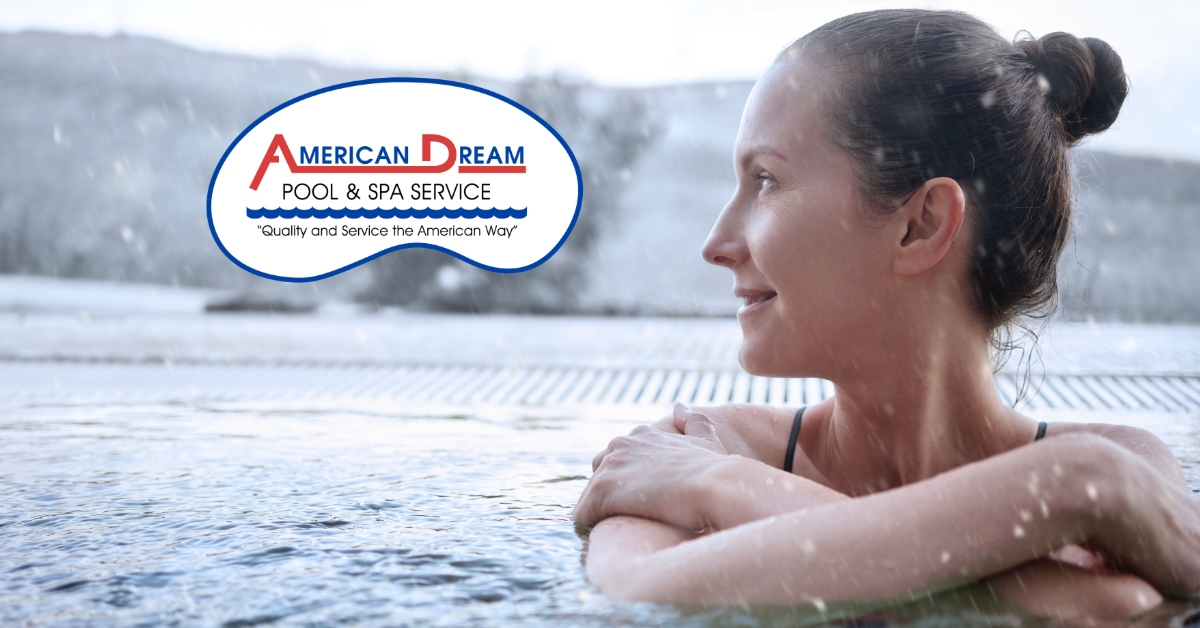How to Plan for Cold-Weather Swimming in Northern California
When Marcy in Roseville told her neighbors she was still swimming in December, they thought she’d lost it. But there she was, gliding across warm blue water while everyone else was unpacking Christmas lights. The secret wasn’t superhuman tolerance—it was planning. Marcy kept her pool open through winter with a little heat, proper maintenance, and the right routine.
Here in Northern California, winter doesn’t always mean packing up the pool toys for months. With mild temperatures and the right setup, many homeowners can enjoy their pools all year long. The trick is knowing how to prepare, protect, and maintain your pool during cooler months without wasting energy—or shocking your utility bill.
Can You Really Swim Year-Round in Northern California?
Yes, you can. Winter swimming in our area is completely doable. Lincoln, Rocklin, and Granite Bay rarely see freezing temperatures, so you can comfortably extend your swim season if you plan ahead.
The key is balancing comfort, safety, and cost. With today’s energy-efficient pool heaters and covers, keeping your pool open year-round is easier (and cheaper) than most people think.
What You’ll Need for Winter Swimming
If you plan to use your pool this winter, a few essentials make all the difference.
1. A Reliable Pool Heater
A gas or electric heater (or heat pump) keeps your water comfortable, usually between 80–84°F. Heat pumps are more energy-efficient for mild climates, while gas heaters work faster for on-demand warmth.
2. A Solar or Thermal Pool Cover
A pool cover traps heat and prevents evaporation, keeping water warmer overnight. Without one, most of your heat literally disappears into thin air.
3. Regular Water Circulation
Running your pool pump a few hours each day keeps the water chemistry balanced and prevents algae buildup. Shorter run times are fine in winter—4 to 6 hours usually does the trick.
4. Balanced Water Chemistry
Cold water needs fewer chemicals, but skipping maintenance altogether can lead to cloudy or green water. Regular testing keeps chlorine, pH, and alkalinity steady even in cooler temps.
How to Prep Your Pool for Year-Round Use
If you’re keeping your pool open through the winter, it needs a little attention before the cool weather hits.
Step 1: Clean and Inspect
Vacuum the pool, brush the walls, and empty the skimmer baskets. Check your filters, heater, and pump for any signs of wear. Winter isn’t the time to ignore small leaks or unusual noises.
Step 2: Adjust the Schedule
You don’t need your pump running as long as in summer. Cut it down to half the usual time, but make sure it cycles daily to prevent stagnant water.
Step 3: Test and Balance Weekly
Even in cold weather, your water chemistry changes. Test weekly for chlorine, pH, and alkalinity. Add sanitizer as needed to keep bacteria and algae at bay.
Step 4: Protect Against Cold Snaps
While freezing temps are rare in Northern California, a sudden cold night can still cause damage. During cold spells, let your pump run continuously overnight to keep water moving through the pipes.
Step 5: Cover When Not in Use
A good pool cover cuts down heat loss, keeps out debris, and saves money on chemicals. It’s one of the best investments for winter swimming.
Common Myths About Winter Pool Use
“It’s Too Expensive to Heat”
Not true with today’s technology. Variable-speed pumps, solar heaters, and insulated covers can drastically cut energy costs. If you only heat the pool on weekends or evenings, the costs are even lower.
“Cold Air Will Ruin My Equipment”
Your pool equipment is built to handle outdoor temperatures. As long as you keep water circulating during cold nights, there’s little risk of damage.
“I Have to Drain My Pool for Winter”
That’s a common mistake. Draining your pool can cause structural problems and make your equipment dry out. Keeping it full and filtered is much safer.
The Benefits of Using Your Pool in Winter
Stress Relief
There’s something peaceful about a warm swim on a crisp evening. The contrast between warm water and cool air is calming and can help you unwind after a long day.
Exercise
If you hate the treadmill, a few winter laps can keep your heart rate up without leaving home. Heated pools make exercise comfortable year-round.
Better Water Quality Year-Round
Running your pool through winter keeps equipment in shape, prevents algae from taking hold, and avoids the “green swamp” surprise when spring arrives.
Social Bonus
Winter pool parties might sound unusual, but they’re unforgettable. Add some floating lights, a fire pit, and warm towels—you’ll be the neighborhood legend.
When It’s Better to Close Instead
If your pool doesn’t have a heater or you’re not planning to use it, closing it properly for winter is still smart. Cleaning, balancing, and covering it keeps water in good shape until spring.
American Dream Pool & Spa Service also provides winter closing and maintenance packages to keep your water balanced and equipment protected until you’re ready to reopen.
How to Save on Winter Pool Costs
Use a solar blanket or cover every night.
Run the pump during off-peak hours to save electricity.
Keep the heater around 80°F instead of max temperature.
Clean filters regularly for better efficiency.
Small adjustments add up to noticeable savings through the season.
Keeping Your Pool Swim-Ready Year-Round
Marcy still takes her morning swim every week, even in January. Her secret wasn’t magic—it was maintenance and planning. Whether you swim through winter or just want to keep your pool in great shape for spring, consistency is key.
American Dream Pool & Spa Service helps Northern California homeowners keep their pools clean, balanced, and ready—no matter the season. From Lincoln and Rocklin to Roseville, Granite Bay, Sheridan, Loomis, and Penryn, we provide expert pool maintenance, equipment service, and winter preparation that keeps your backyard oasis open year-round.


